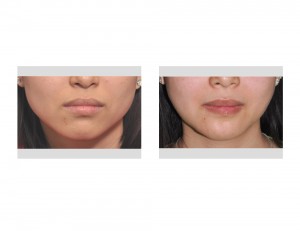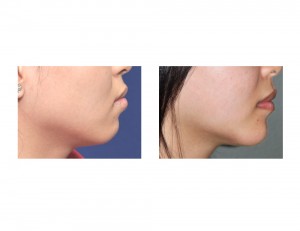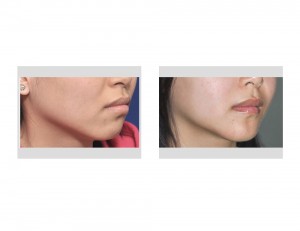Background: Jaw or jawline reduction surgery is directed towards narrowing the lower third of the face. Very square or wide lower faces is either considered too masculine or aesthetically undesired in women in particular and in some men. While widely considered an Asian (particularly Korean) type surgery, it is becoming more commonly requested amongst Caucasians as well to help slenderize their face.
There are non-surgical and surgical methods for jaw reduction (so called V-line jaw surgery) based on the anatomy of the mandible and its soft tissue attachments. A wide lower face can be caused by masseter muscle enlargement due to congenital development or bruxism and is treated non-surgically by Botox injections. Masseter muscle reduction is often a necessary part of jawline narrowing but mandibular bone changes are usually the cornerstone of V-line jaw narrowing.
In narrowing the jawline it is necessary to create the visual effect of a less wide mandible from angle to chin. While it is commonly perceived that the bone is cut from the sides of the jawline from back to front, this is not how it is actually done. The location of the inferior alveolar nerve in the mandible as it courses through the bone and its exit from the mental foramen anteriorly make such a bone reduction approach surgically very difficult with a high risk of nerve injury. Thus most commonly chin and jaw angle bony procedures are done to create the v-line jaw narrowing effect,
Case Study: This 21 year-old female wanted multiple facial reshaping procedures done. One of her main areas of focus was her wide lower face and shorter chin. V-line jaw narrowing surgery was planned.


In most V-line jaw narrowing surgeries, the body of the mandible does not need to be reduced to create the effect. Chin and jaw angle changes are enough in most cases to create an adequate jawline narrowing result.
Case Highlights:
1) Jawline reshaping typically strives to make the jawline more narrow and longer in the front view.
2) Most jawline narrowing techniques involve an anterior bony genioplasty and a posterior angle/ramus reduction.
3) As the chin becomes less wide (and sometimes vertically longer) and angles become less wide, the jawline becomes perceptibly more narrow and v-shaped.
Dr. Barry Eppley
Indianapolis, Indiana



